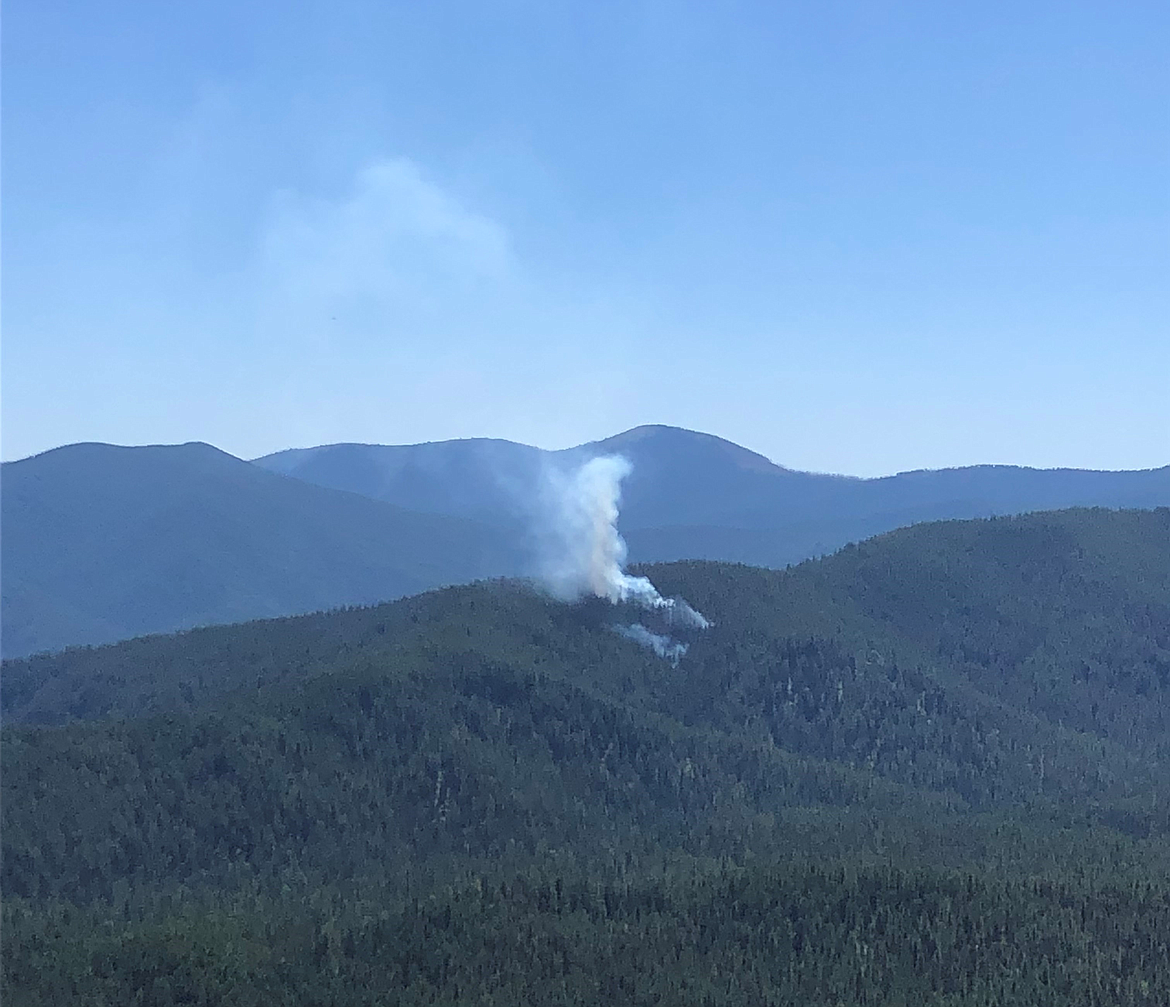Fire season gets its start
Wildfire season has once again arrived in North Idaho, a little later than usual.
Heavy winter snowpack and spring precipitation helped delay this year's fire season, but numerous storms and neglectful humans are helping ramp up forest fire activity.
“In the last week, the Idaho Panhandle National Forests have responded to 12 wildfire starts,” said Kary Maddox, forest service fire information officer, in a July 19 news release. “Most have been from the plentiful lightning seen across the area, but a few have been abandoned campfires.”
While the vast majority of these fires were small, roughly one-tenth of an acre, a minor incident can easily become a major one.
Wildland firefighters are currently battling the Diamond Watch Fire, 5.5 miles west of Nordman, Idaho, and roughly 11 miles west of Priest Lake. As of Sunday, the lightning-caused blaze had burned roughly 7 acres on the northeast side of Diamond Peak in Pend Oreille County, Washington.
Fire danger across the Idaho Panhandle is “moderate” in all areas at this time. This means fires can start from most accidental causes, but with the exception of lightning fires in some areas, the number of starts is generally low.
“Fires in open cured grasslands will burn briskly and spread rapidly on windy days,” Maddox said. “Timber fires spread slowly to moderately fast. The average fire is of moderate intensity, although heavy concentrations of fuel, especially draped fuel, may burn hot. Short-distance spotting may occur, but is not persistent. Fires are not likely to become serious and control is relatively easy.”
Maddox explains that a good indicator of wildfire risk (and one of the main factors that influences Fire Danger Rating) is called the energy release component (ERC). The ERC is a number related to the available energy (BTU) per unit area (square foot) within the flaming front at the head of a fire. The ERC is considered a composite fuel moisture index as it reflects the contribution of all live and dead fuels to potential fire intensity. As live fuels cure and dead fuels dry, the ERC will increase and can be described as a build-up index.
“Last year around this time, several areas across the Idaho Panhandle set record-high ERC’s," Maddox said. "This year, we have seen record lows. That being said, July and August temperatures and precipitation have much more influence on wildfire potential than spring weather does.”
When lightning is forecast, Maddox said fire managers keep a close eye on the lightning map to focus patrols in a specific area and they can also order a detection flight.
Detection flights consist of a qualified aerial observer riding in a fixed-wing aircraft flying a predetermined grid or the lightning map, depending on time and priorities. Aerial observers relay detailed information to our interagency dispatch center in Coeur d'Alene, then district duty officers prioritize incidents for initial attack firefighters.
On average, though, human-caused wildfires make up 87% of all wildfire occurrences annually.
“We are lucky to not have a dominant trend in human-caused fire starts in North Idaho, but they are still consistently occurring,” Maddox said. “Although in the minority so far, human-caused starts are often in areas with the highest potential to threaten life and home. Check your chains, dispose of cigarettes properly, and never leave a campfire unattended.”
Maddox encourages campers to use the “drown, stir and feel” method to ensure a campfire is fully extinguished.
"Drown the fire with water, then stir around the fire area with your shovel to wet any remaining embers and ash," Maddox said. "Be sure to turn wood and coals over and wet all sides. Move some dirt onto the fire site and mix thoroughly to fully smother it. And, finally, feel the area with the back of your hand to ensure nothing is still smoldering."
To report a wildfire, call 208-772-3283 or 911. For information about current wildfires in the Idaho Panhandle National Forests, call the Fire Info Line at 208-557-8813.
The forest service recommends residents sign up for emergency alerts through their county.
For information about developing an evacuation plan, evaluating landscaping or learning about fire ecology and management, visit idahofirewise.org.

